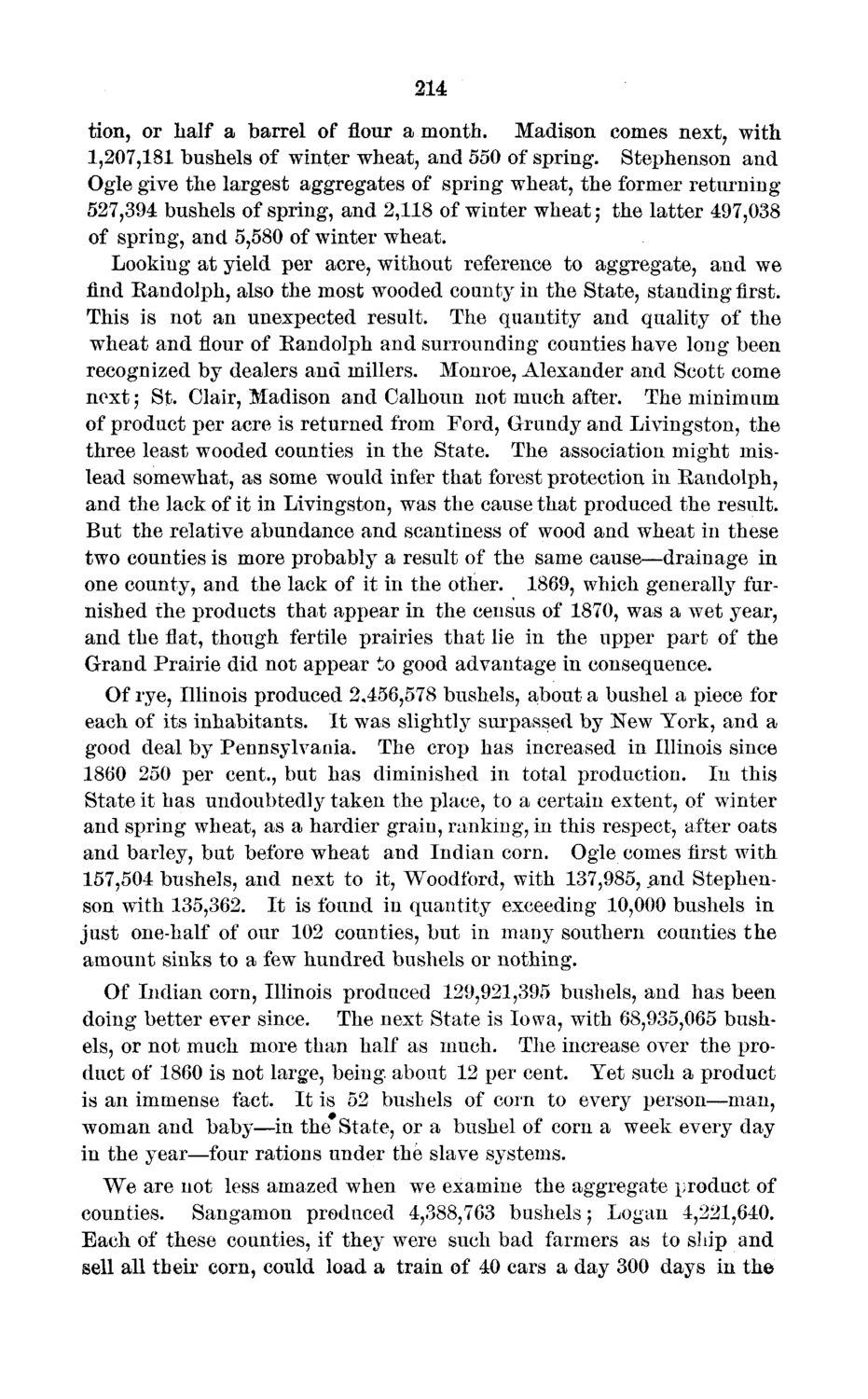| |
| |
Caption: Board of Trustees Minutes - 1873
This is a reduced-resolution page image for fast online browsing.

EXTRACTED TEXT FROM PAGE:
214 tion, or half a barrel of flour a month. Madison comes next, with 1,207,181 bushels of winter wheat, and 550 of spring. Stephenson and Ogle give the largest aggregates of spring wheat, the former returning 527,394 bushels of spring, and 2,118 of winter wheat; the latter 497,038 of spring, and 5,580 of winter wheat. Looking at yield per acre, without reference to aggregate, and we find Eandolph, also the most wooded county in the State, standing first. This is not an unexpected result. The quantity and quality of the wheat and flour of Eandolph and surrounding counties have long been recognized by dealers and millers. Monroe, Alexander and Scott come next ; St. Olair, Madison and Calhoun not much after. The minimum of product per acre is returned from Ford, Grundy and Livingston, the three least wooded counties in the State. The association might mislead somewhat, as some would infer that forest protection in Eandolph, and the lack of it in Livingston, was the cause that produced the result. But the relative abundance and scantiness of wood and wheat in these two counties is more probably a result of the same cause—drainage in one county, and the lack of it in the other. 1869, which generally furnished the products that appear in the census of 1870, was a wet year, and the flat, though fertile prairies that lie in the upper part of the Grand Prairie did not appear to good advantage in consequence. Of rye, Illinois produced 2,456,578 bushels, about a bushel a piece for each of its inhabitants. It was slightly surpassed by New York, and a good deal by Pennsylvania. The crop has increased in Illinois since 1860 250 per cent., but has diminished in total production. In this State it has undoubtedly taken the place, to a certain extent, of winter and spring wheat, as a hardier grain, ranking, in this respect, after oats and barley, but before wheat and Indian corn. Ogle comes first with 157,504 bushels, and next to it, Woodford, with 137,985, and Stephenson with 135,362. It is found in quantity exceeding 10,000 bushels in just one-half of our 102 counties, but in many southern counties the amount sinks to a few hundred bushels or nothing. Of Indian corn, Illinois produced 129,921,395 bushels, and has been doing better ever since. The next State is Iowa, with 68,935,065 bushels, or not much more than half as much. The increase over the product of 1860 is not large, being about 12 per cent. Yet such a product is an immense fact. It is 52 bushels of corn to every person—man, woman and baby—in the State, or a bushel of corn a week every day in the year—four rations under the slave systems. We are not less amazed when we examine the aggregate product of counties. Sangamon produced 4,388,763 bushels; Logan 4,221,640. Each of these counties, if they were such bad farmers as to ship and sell all their corn, could load a train of 40 cars a day 300 days in the
| |